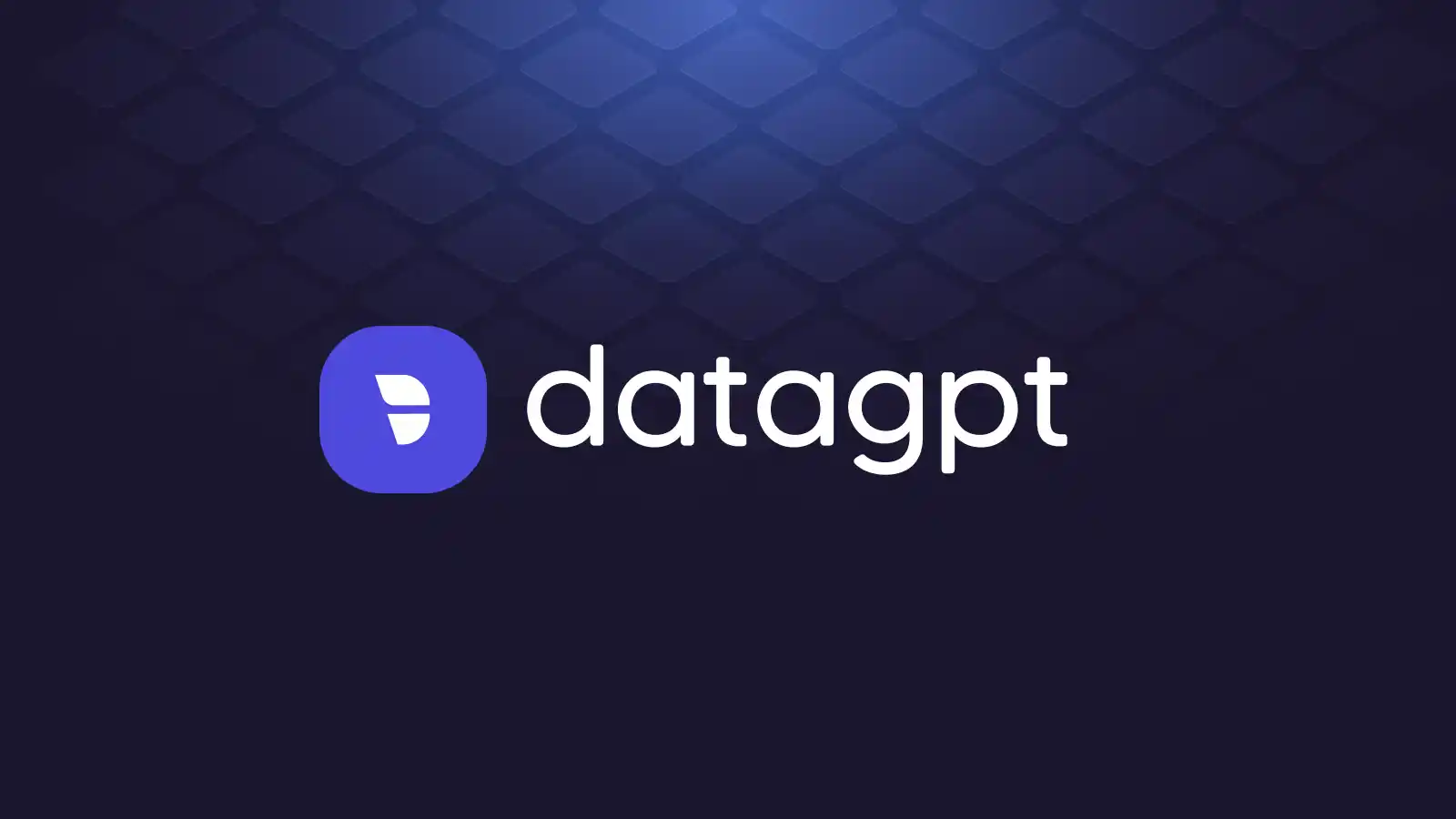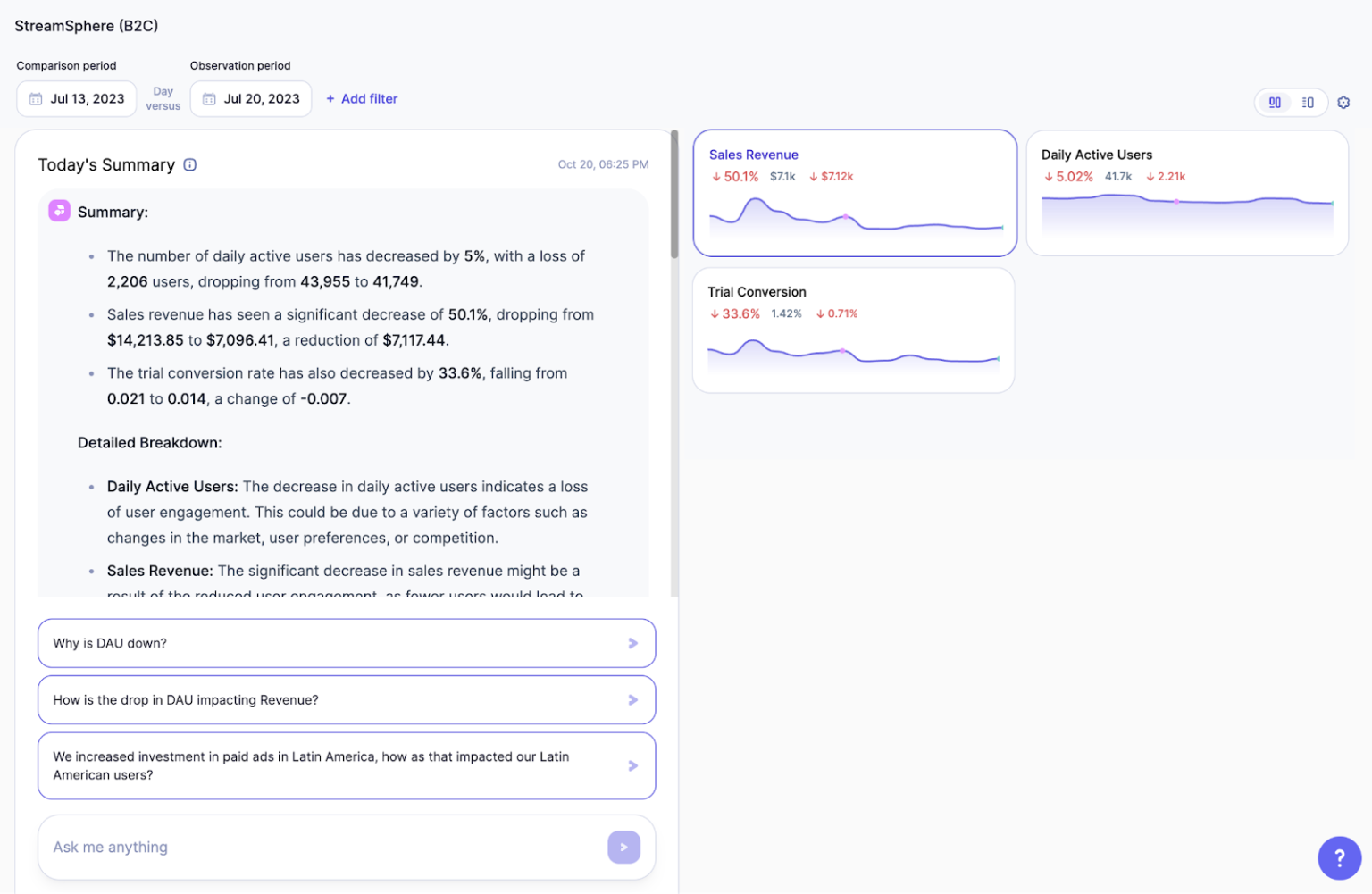DataGPT emerges with an AI Analyst in the constantly evolving tech sphere, redefining how companies interact with their datasets. This California-based startup is breaking barriers, integrating conversational AI with deep analytics, and allowing businesses to chat with their data like colleagues.
➜ Understanding DataGPT’s Ambitious Undertaking
DataGPT’s newest offering, the AI Analyst, is no ordinary chatbot. It marries the imaginative prowess of a large language model with the reasoning capability of DataGPT’s exclusive analytics engine. This dynamic duo processes millions of inquiries to uncover significant insights, from causes impacting business earnings to the underlying reasons for such effects.
“We are committed to empowering anyone, in any company, to talk directly to their data,” says Arina Curtis, the CEO and co-founder of DataGPT.
Yet, the burning question remains: With several tech giants already making waves in the data ecosystem, how will DataGPT set itself apart?
➜ Peeling Back the Layers: How DataGPT’s AI Analyst Operates
Over two years since its inception, DataGPT has taken on traditional Business Intelligence (BI) tools, often demanding manual efforts to extract actionable insights. Recalling the journey, Curtis mentioned:
“Our first customer, Mino Games, dedicated substantial resources to building an ETL process, creating numerous custom dashboards and hiring a team of analysts.”
For DataGPT, the primary goal is simplicity. Businesses configure a use case on a DataGPT page aligned with specific business aspects or pre-set KPIs. Users then access two vital components: the AI Analyst for conversational interaction and the Data Navigator for a more conventional, visualization-rich experience.
This system is powered by three core back-end layers: A data store, a Core analytics engine, and an Analyst agent driven by a self-hosted large language model.
So, multiple processes spring into action when a user queries about a business trend, for instance, regarding revenue spikes in North America. The embedded model locates a close match in the data schema, and the self-hosted LLM formulates a plan. The Data API algorithm manages tasks within this plan and is capable of intricate analyses beyond ordinary SQL/Python functions. Curtis elaborates:
“The core analytics engine does all analysis…Meanwhile, the self-hosted LLM humanizes the response and sends it back to the chatbot interface.”
DataGPT’s edge lies in its speed and precision. With an extensive in-house training set tailored for their model, they ensure unparalleled accuracy and resilience against any system alterations.
➜ The Gains for Enterprises
Several enterprises, including Mino, Plex, Product Hunt, and Dimensionals, have reaped the benefits of DataGPT’s technology. They’ve harnessed the AI Analyst to expedite insights, leading to faster, more informed decisions. This tool also liberates analysts from routine tasks, allowing them to concentrate on high-priority endeavors.
Curtis underscored the efficiency, revealing that DataGPT’s database is exponentially faster than its traditional counterparts, executing queries at speeds previously deemed unattainable. This prowess translates to boosted revenue and time-saving.
“These newly attainable insights can unlock up to 15% revenue growth for businesses…DataGPT plans to open source its database in the near future,”
➜ Mapping Out the Future
Securing a commendable $10 million in funding, DataGPT has effectively addressed 80% of common data-related questions. They’re not resting on their laurels, though. The future beckons with plans to expand analytical capabilities, integrating cohort analysis, forecasting, and predictive analysis.
However, the timeline remains a secret. But in a market teeming with data vendors investing in LLM-based tools, these expanded capabilities might solidify DataGPT’s distinctiveness.
➜ The Competitive Landscape and DataGPT’s Differentiator
Many tech firms are steering towards generative AI to democratize data access. However, DataGPT claims superiority through its analytical engine’s prowess. Differentiating between popular solutions, Curtis mentioned:
“DataGPT delivers a new data experience… Many platforms falter when it comes to combining the logical, ‘left-brained’ tasks of deep data analysis and interpretation with the LLM.”
DataGPT’s AI Analyst is not just an innovation; it’s a paradigm shift in how businesses perceive and converse with data. As enterprises strive for agility and accuracy, tools like these are indispensable. Curious about AI’s potential in reshaping industries? Dive deeper with NeuralWit to explore more.



